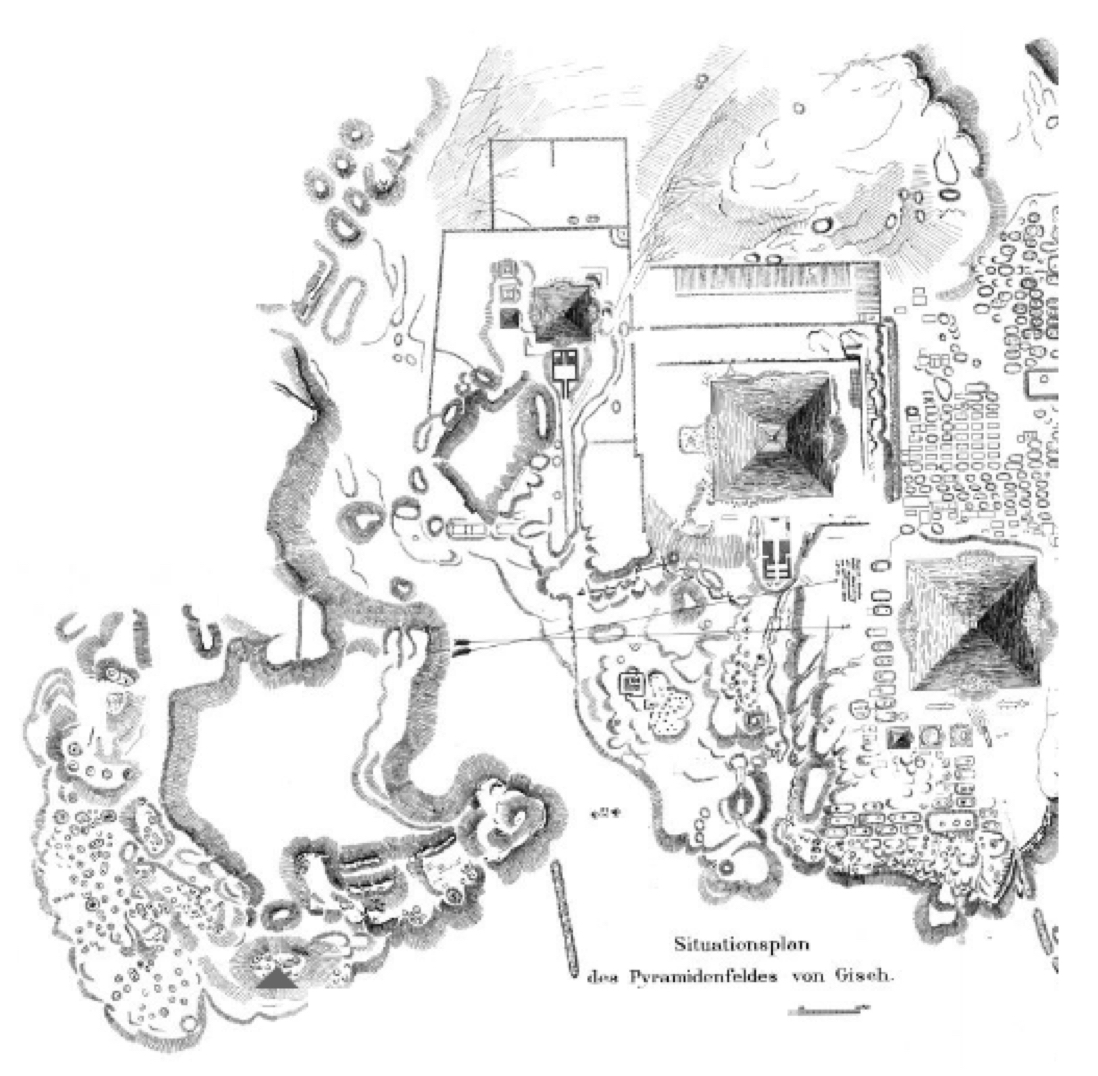:
Diary Transcription:
microfilm: begin page 74
Monday, March 25, 1912 (continued)
[General Maxwell (continued)]
needs investigation. Has he received stolen goods? Did he investigate the theft?
Tuesday, March 26, 1912
Cleared to proposed limit on east and turning north along face of G 2200 [= G 5080].
[ILLUSTRATION]
The outside walls are shown by the first course only a few cm high. To all appearances the theft of stone began even during the Old Kingdom.
Wednesday, March 27, 1912
Sprinkles of rain in the night.
The chamber of G 2220 is now clear. The stone door bar lies broken in the chamber. A mound of dirty, stone-chip debris covered the north end. The destruction appears to have been caused in part by stone thieves of indeterminable date and in part by more recent Kafr-el-Haram plunderers. In the surface sand a clay pipe was found with GLASGOW stamp on the stem. A similar one was found in Nubia at cemetery
microfilm: end page 74
-
- Classification
- Documentation-Expedition diary pages
-
- Department
- Harvard University-Boston Museum of Fine Arts Expedition
-
- Credit Line
- Harvard University–Boston Museum of Fine Arts Expedition
-
- Display Page Dates
- 03/25/1912; 03/26/1912; 03/27/1912
-
- Author
- George Andrew Reisner, American, 1867–1942
-
- Mentioned on page
- General Sir John Maxwell
Modern People
-
- Type Mentioned on page
- Nationality & Dates
- Remarks Commander Army of Occupation
-
- Type Author
- Nationality & Dates American, 1867–1942
- Remarks Egyptologist, archaeologist; Referred to as "the doctor" and "mudir" (Arabic for "director") in the excavation records. Nationality and life dates from Who was Who in Egyptology.

